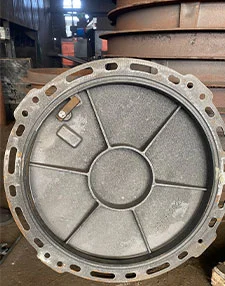nails for lumber
Nails for Lumber The Unsung Heroes of Construction
When you think about the construction of a wooden structure, the first things that often come to mind are the beams, planks, and other visible components of lumber. However, one of the most critical elements that holds everything together is often overlooked nails. These unassuming fasteners are essential for woodworking, and understanding their types and uses can significantly enhance any construction project.
The Importance of Nails in Lumber Construction
Nails serve as the connection points in wooden construction, acting as the glue that binds various elements of a project. By securely fastening pieces of lumber, nails provide structural stability and integrity. Without them, buildings and furniture would be far less secure, potentially compromising safety. They support everything from framing houses to assembling furniture, making their role indispensable.
Different Types of Nails
There is a wide variety of nails available, each designed for specific applications. Understanding these differences is key to selecting the right fastener for your project.
1. Common Nails These are the standard nails used in general construction. They are large, sturdy, and excellent for framing walls and roof structures.
2. Finishing Nails With a smaller head and a more slender shaft, finishing nails are used when aesthetics are a concern. They can be easily hidden beneath paint or wood finish, making them ideal for trim work and cabinetry.
3. Box Nails Similar to common nails but thinner, box nails reduce the risk of splitting the wood. They are commonly used in less structural parts of construction, such as light-duty applications.
4. Brad Nails These are very thin nails, typically used in light-weight applications. They are perfect for attaching delicate trim work without damaging the surrounding material.
nails for lumber

5. Screws and Specialty Nails While not technically nails, screws such as deck screws or drywall screws are often used interchangeably with nails, especially in applications requiring a strong hold and resistance to withdrawal. Specialty nails designed for specific uses, like roofing or flooring, are also available, featuring unique coatings and shapes to improve performance in various environments.
The Role of Material and Coating
Nails are commonly made from steel, but various materials and coatings are available that enhance their performance. For example, galvanized nails are coated with zinc to prevent rust, making them ideal for outdoor applications where exposure to moisture is a concern. Stainless steel nails provide even greater corrosion resistance and are often used in high-humidity areas or treated lumber.
Selecting the Right Nail for the Job
When embarking on a construction project, selecting the appropriate nail is crucial. Consider the type of lumber you are working with, the intended load or stress on the joint, and environmental factors that might affect the durability of the nails. For instance, when constructing a deck, you would choose galvanized or stainless-steel nails to prevent rusting due to exposure to water.
The Future of Nails in Construction
As construction techniques evolve, so do the materials and tools used in the industry. Innovations such as collated nails, which are used in nail guns to speed up the nailing process, have made construction more efficient. Additionally, the growing popularity of eco-friendly building materials has led to the development of more sustainable nail options.
Conclusion
While they may be small and often go unnoticed, nails are the backbone of lumber construction. Understanding their types, materials, and appropriate uses can make a significant difference in the quality and longevity of a project. As we continue to innovate in the realm of construction, one thing remains clear nails will always be a crucial component in connecting the raw beauty of lumber into something functional and enduring. Whether you are a professional contractor or a DIY enthusiast, honing your knowledge of nails can elevate your construction skills and result in safer, more resilient structures.
-
Innovations in Razor Barbed Wire Design TechnologyNewsAug.11,2025
-
Roofing Nail Compatibility with Different Metal Roof TypesNewsAug.11,2025
-
Welded Wire Mesh for Rockfall Protection BarriersNewsAug.11,2025
-
Galvanized Wire Corrosion Resistance TestingNewsAug.11,2025
-
3D Fence Solutions Preventing Bird CollisionsNewsAug.11,2025
-
Using Chain Link Fence for Urban Garden SupportNewsAug.11,2025




